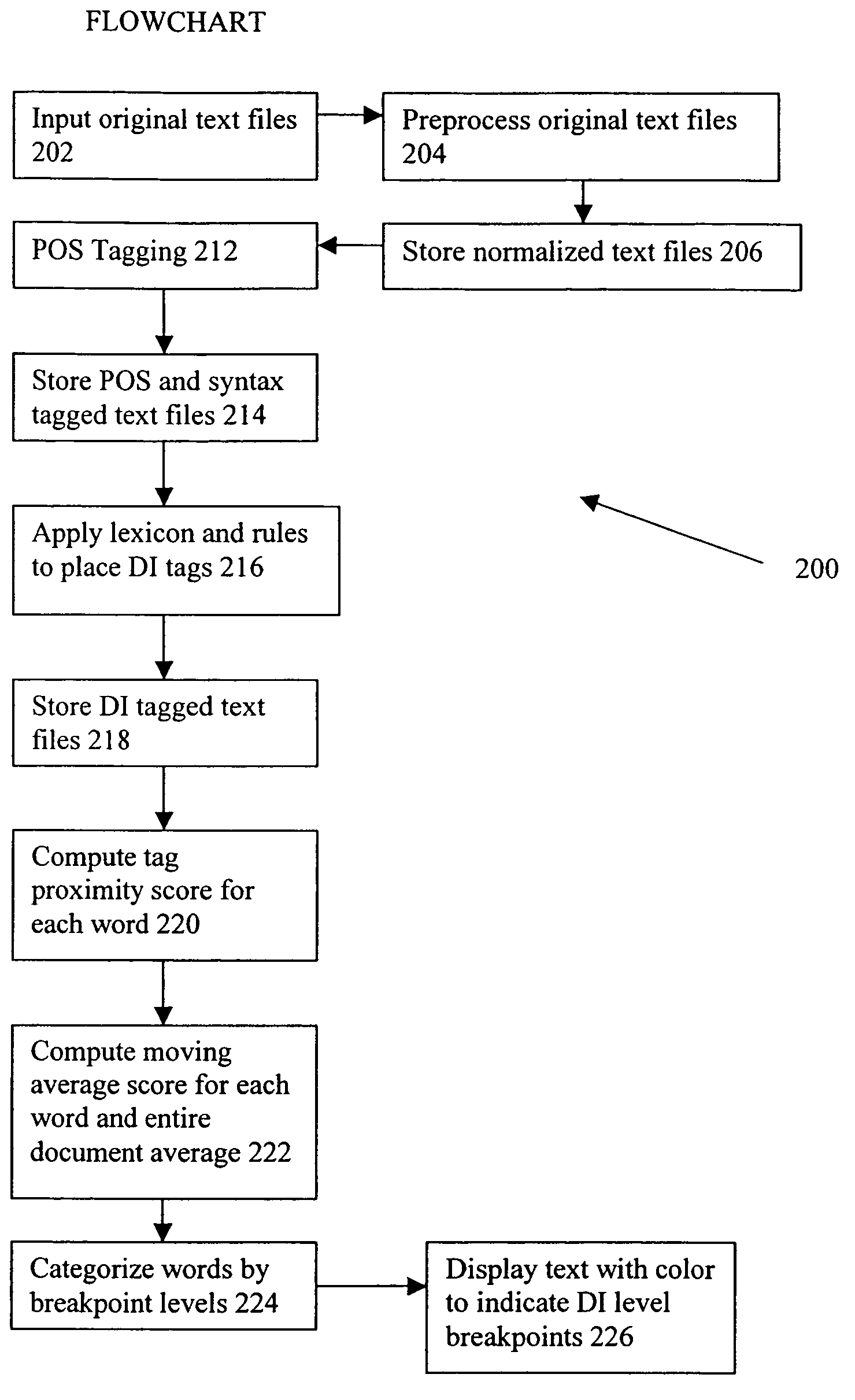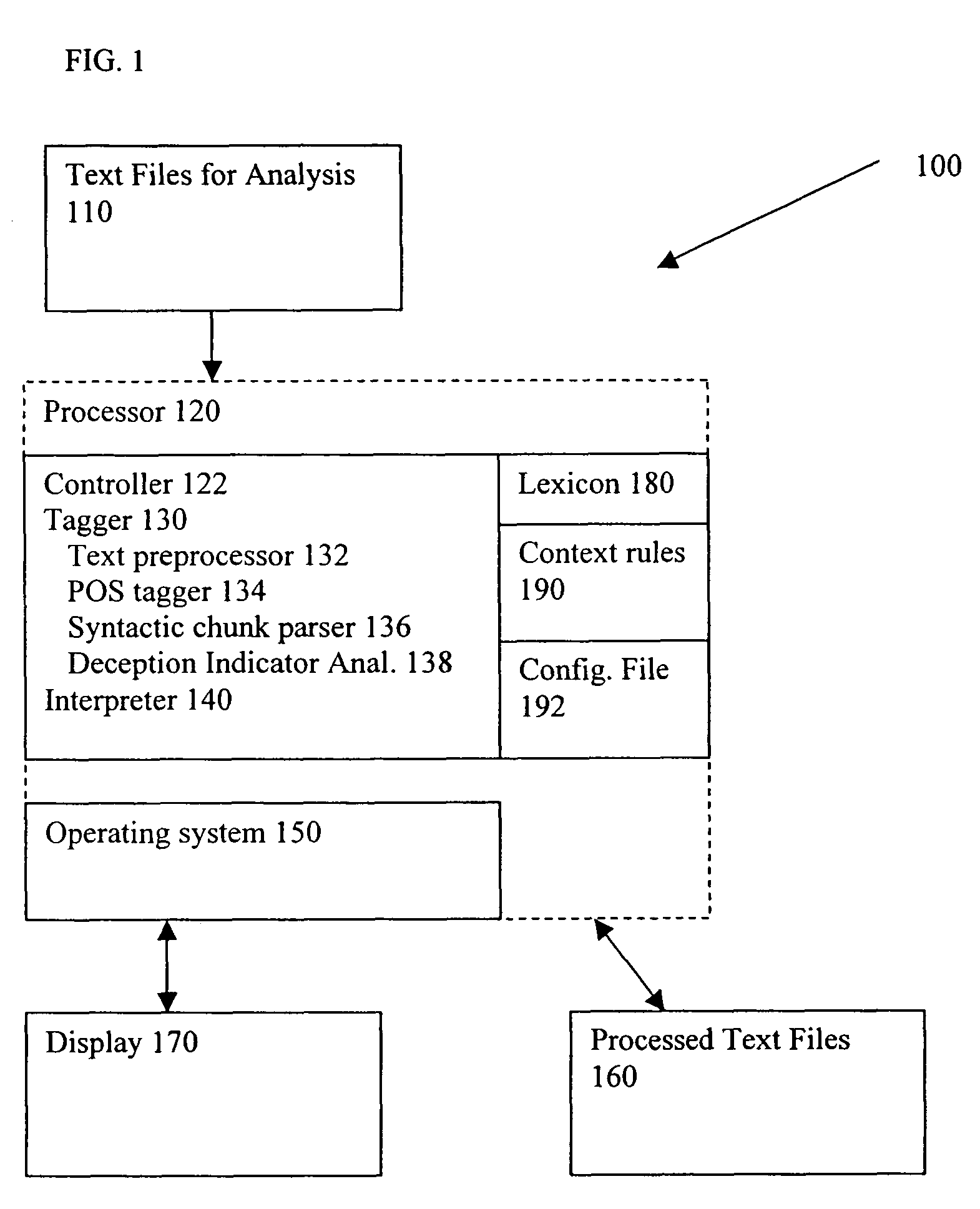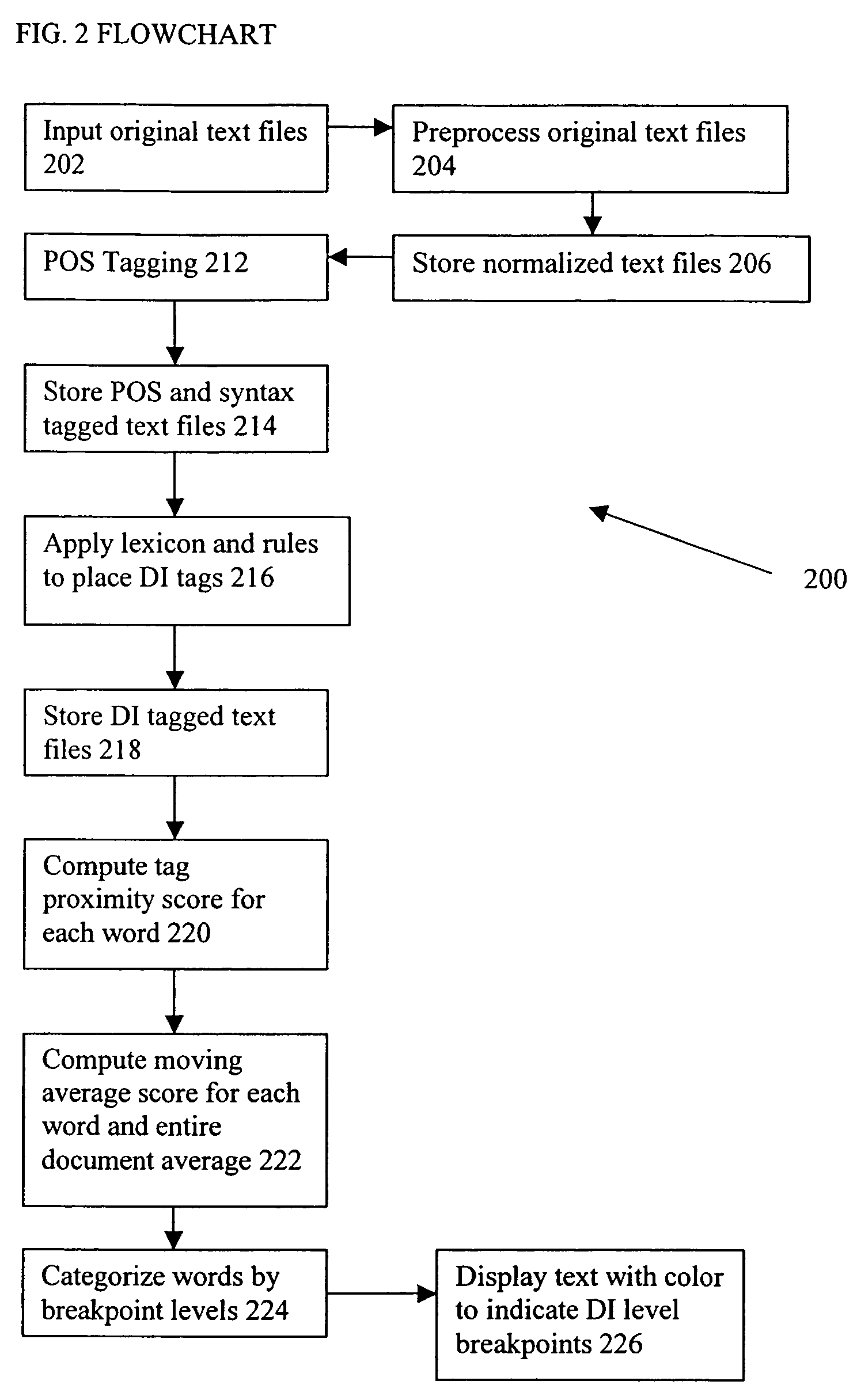Method and system for the automatic recognition of deceptive language
a technology of automatic recognition and deception, applied in the field of automatic recognition of deception language, can solve the problems of lack of formal detail to be automated, no proposed approach bases its claim on the examination of large text or speech corpora, and the technology is not appropriate for freely generated speech
- Summary
- Abstract
- Description
- Claims
- Application Information
AI Technical Summary
Benefits of technology
Problems solved by technology
Method used
Image
Examples
example
[0042]Input:[0043]I / PRP went / VBD to / TO bed / NN at / IN approximately / RB 9 / CD to / TO 9 / CD 30 / CD PM / NNP . / . today / NN I / PRP did / VBD not / RB have / VB any / DT beers / NNS to / TO drink / VB . / . we / PRP were / VBD back / RB out / RP hunting / VBG by / IN around / IN 2 / CD PM / NNP . / .
[0044]Output:[0045][I / PRP]NP_SUBJ [went / VBD]MAINVERB to / TO [bed / NN]NP at / IN approximately / RB 9 / CD to / TO 9 / CD 30 / CD [PM / NNP]NP . / . [today / NN]NP [I / PRP]NP_SUBJ [did / VBD not / RB have / VB]MAINVERB [any / DT beers / NNS]NP to / TO drink / VB . / . [we / PRP]NP_SUBJ [were / VBD]MAINVERB back / RB out / RP hunting / VBG by / IN around / IN 2 / CD [PM / NNP]NP . / .
[0046]In the above, the POS abbreviations are those used by the UPenn Treebank, e.g., VBD=Verb, past tense; NN=Noun, singular; PRP=Personal Pronoun; DT=Determiner; IN=Preposition. See Marcus, M. P., Santorini, B., and Marcinkiewicz, M. A. (1993) “Building a large annotated corpus of English: The Penn Treebank.”Computational Linguistics, 19(2), 313-330.
III. Deception Indicator Analyzer
[0047]A deception indicator (“DI...
PUM
 Login to View More
Login to View More Abstract
Description
Claims
Application Information
 Login to View More
Login to View More - R&D
- Intellectual Property
- Life Sciences
- Materials
- Tech Scout
- Unparalleled Data Quality
- Higher Quality Content
- 60% Fewer Hallucinations
Browse by: Latest US Patents, China's latest patents, Technical Efficacy Thesaurus, Application Domain, Technology Topic, Popular Technical Reports.
© 2025 PatSnap. All rights reserved.Legal|Privacy policy|Modern Slavery Act Transparency Statement|Sitemap|About US| Contact US: help@patsnap.com



